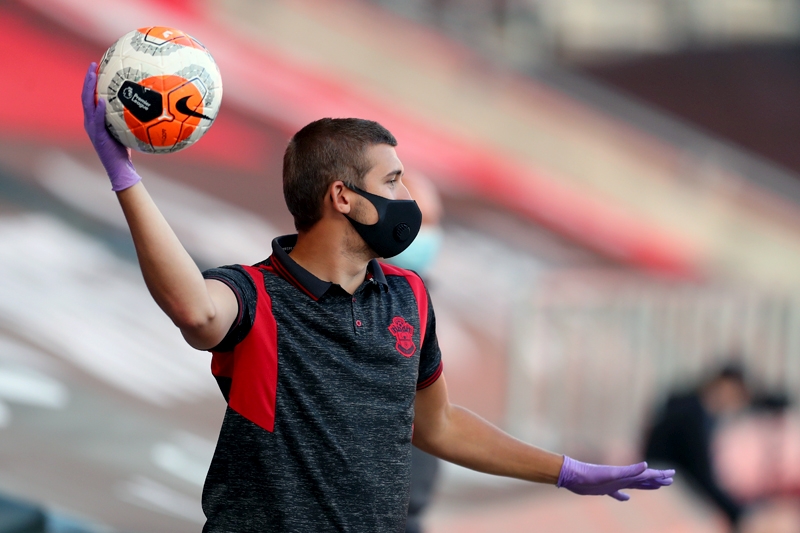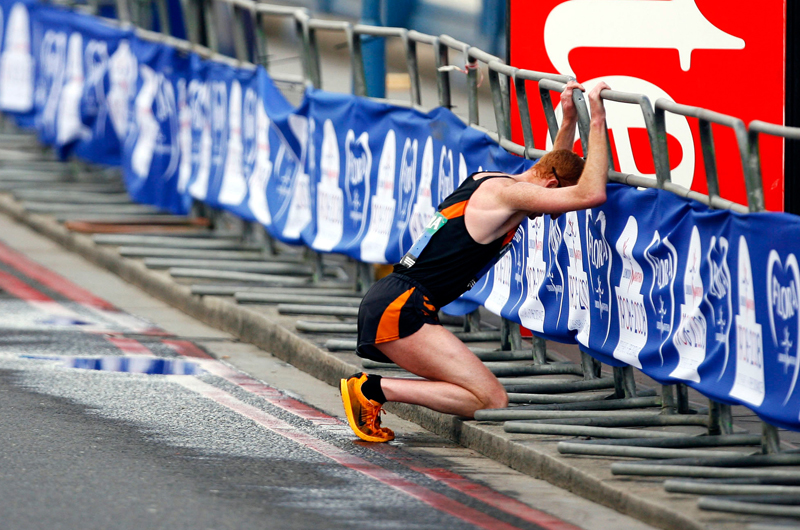You are viewing 1 of your 1 free articles. For unlimited access take a risk-free trial
Heavy breathing: the true cost of masks on performance

New research suggests that quite apart from the subjective discomfort, the performance cost of cloth mask use during exercise is considerable
Despite the successful roll-out of the covid-19 vaccines and the arrival of the summer season, many governments across the globe are still mandating the use of face masks in public and work spaces. Here in the UK, this mandate extends to indoor exercise venues such as gyms and fitness centers. In the US example, the CDC recently updated its recommendations on mask use in gyms, noting that gym users should wear face masks, even during high-intensity exercise(1). In a number of other countries and regions, face mask use is mandated even for outdoor exercise.The pros and cons of mask use
Putting aside the question of the actual efficacy of face coverings for reducing the spread of covid-19 (while there's some evidence that a well-fitted N95 surgical mask can provide a degree of protection, robust evidence from randomized controlled trials for the use of more general face coverings in public settings is scant(2-4)), there are real concerns about their use during exercise. The World Health Organisation (WHO) cautions that wearing a face mask when exercising may reduce the ability to breathe comfortably, and that sweat can make the mask become wet more quickly, resulting in increased breathing difficulty and promotion of bacterial growth(5). Furthermore, once wet, surgical masks can begin to break down, losing the ability to block outgoing virus and other germs.New research on masks and exercise
With the above in mind, and because cloth face masks appear to be the most common type of mask used by the general public, a team of US researchers has examined the impact of wearing a cloth face mask on subjective and objective heart-lung responses to maximal exercise and performance(6). Published just three days ago in the British Journal of Sports Medicine, the scientists set out to determine: a) if wearing a cloth face mask significantly affected exercise performance and associated physiological responses, and b) to describe the perceptual measures of effort and participants’ experiences while wearing a face mask during a maximal treadmill test.To do this, 28 healthy young (18-29 years) participants were selected to take part. All the participants completed two trials – one with and one without a cloth face mask. Each trial consisted of a maximal exercise test on a treadmill, using the ‘Bruce protocol’ - an exercise test where the athlete works to complete exhaustion as the treadmill speed and incline is increased every three minutes and the athlete’s time to exhaustion on the treadmill is recorded (and can be used to estimate maximum oxygen uptake capacity). In addition to accrued time on the treadmill, blood pressure, heart rate, oxygen saturation, perceived exertion and shortness of breath were assessed in each athlete. The athletes’ subjective observations were also recorded, particularly their perceptions of wearing face masks following the masked trial.
The findings
The key findings were as follows:- Compared to no mask use, cloth face masks reduced exercise time to exhaustion by whopping 14% and maximal oxygen consumption by 29%.
- Compared with no mask, participants reported feeling increasingly short of breath and claustrophobic at higher exercise intensities while wearing a cloth face mask.
- Compared to no mask, blood oxygenation levels were lower when a cloth face mask was worn (see figure 1).
Figure 1: Physical and subjective effects of a cloth face mask during maximal exercise test

NB: solid line = cloth mask use, dashed line = no mask use; SpO2 = blood oxygenation; Dyspnea = shortness of breath.
Implications for athletes
The researchers cautioned that their results finding very significantly impaired performance might have partly occurred due to the perceived discomfort associated with mask-wearing – ie the athletes were less motivated to continue at higher intensities. However, the reduced levels of blood oxygen also show a very real physiological effect. These findings also fit with other mask-exercise research that we reported on in SPB last year. This found that the more effective the mask was in terms of filtration capacity, the more negatively it impacted exercise performance – see this article.In terms of what these findings mean in practice, the key take-home message here is that face mask use during exercise DOES impose a very real and detrimental cost. Therefore, coaches, trainers and athletes should consider modifying the frequency, intensity, time and type of exercise when wearing a cloth face mask. In particular, where mask use is unavoidable, exercise intensity and duration should be reduced. Likewise, the athlete’s goals should be modified to reflect the reduced performance and also account for the (negative) psychological impact of wearing a cloth face mask while exercising. Finally, when there is a need for high-intensity training, athletes should choose training locations where face mask use is not required.
References
- Recommendations from the CDC's Morbidity and Mortality Weekly Reports (MMWR) - www.cdc.gov/mmwr/index.html
- Ann Fam Med. Jan-Feb 2021;19(1):55-62
- Eur J Epidemiol . 2021 Feb;36(2):143-147
- Ann Intern Med. 2021 Mar;174(3):335-343
- World Health Organization. Coronavirus disease (COVID-19) advice for the public. Mythbusters, 2020
- Br J Sports Med. 2021 Apr 13;bjsports-2020-103758. doi: 10.1136/bjsports-2020-103758
Newsletter Sign Up
Testimonials
Dr. Alexandra Fandetti-Robin, Back & Body Chiropractic
Elspeth Cowell MSCh DpodM SRCh HCPC reg
William Hunter, Nuffield Health
Newsletter Sign Up
Coaches Testimonials
Dr. Alexandra Fandetti-Robin, Back & Body Chiropractic
Elspeth Cowell MSCh DpodM SRCh HCPC reg
William Hunter, Nuffield Health
Keep up with latest sports science research and apply it to maximize performance
Today you have the chance to join a group of athletes, and sports coaches/trainers who all have something special in common...
They use the latest research to improve performance for themselves and their clients - both athletes and sports teams - with help from global specialists in the fields of sports science, sports medicine and sports psychology.
They do this by reading Sports Performance Bulletin, an easy-to-digest but serious-minded journal dedicated to high performance sports. SPB offers a wealth of information and insight into the latest research, in an easily-accessible and understood format, along with a wealth of practical recommendations.
*includes 3 coaching manuals
Get Inspired
All the latest techniques and approaches
Sports Performance Bulletin helps dedicated endurance athletes improve their performance. Sense-checking the latest sports science research, and sourcing evidence and case studies to support findings, Sports Performance Bulletin turns proven insights into easily digestible practical advice. Supporting athletes, coaches and professionals who wish to ensure their guidance and programmes are kept right up to date and based on credible science.











